If at the end of the 1990s there was absolutely nothing to see in Yoshkar-Ola, then since the 2000s the city has blossomed: all its current sights, including the Kremlin, were built in just a few years. Apparently, the authorities woke up and remembered that the name of the city is translated as “red”, which means it is beautiful.
The city center strikes and surprises, here are Belgian houses along the river, and a Venetian palace, and a harsh German castle, and traditional forms of Russian architecture, embodied in temples and Kremlin towers. Modern Yoshkar-Ola seems to have stepped out of an advertising tourist booklet - all this development looks so unrealistic, you don’t expect to meet this in the very heart of the Volga region!
What to see and where to go in Yoshkar-Ola?
The most interesting and beautiful places for walking. Photos and a short description.
- Obolensky-Nogotkov Square
- Embankment of Bruges
- Chavaina Boulevard
- Tsarevokokshay Kremlin
- Sculptural composition Yoshkin cat
- Complex 12 Apostles
- Republican Puppet Theater
- National Art Gallery
- National Museum of the Republic of Mari El
- Museum of the History of the City of Yoshkar-Ola
- Gulag Museum
- Art Museum
- Museum of Folk Applied Arts
- Mari Youth Theater
- Mari Opera and Ballet Theater
- Drama Theater named after M. Shketan
- Russian Drama Theater named after G. Konstantinov
- Annunciation Tower
- Blagoveshchensky cathedral
- Church of the Assumption of the Blessed Virgin Mary
- Church of the Holy Trinity
- Cathedral of the Resurrection of Christ
- Ascension Cathedral
- Botanical Garden-Institute of PSTU
- Central Park of Culture and Leisure
Obolensky-Nogotkov Square
Looking at the square, you can’t even believe that you are in a Russian city, especially if you stand facing the building of the National Art Gallery, made in the Venetian style and reminiscent of the Doge’s Palace. In the very center there is a monument to the Russian commander I. A. Nogotkov-Obolensky, who did a lot for the development of the city, the entire space of the square is laid with stone tiles and decorated with forged lanterns.
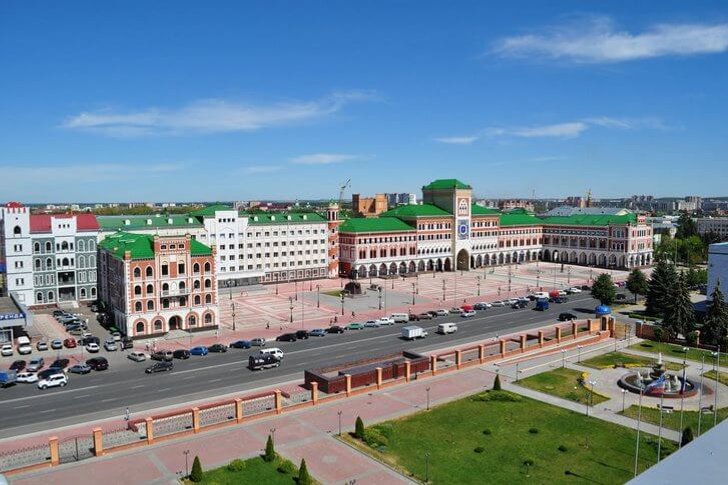
Embankment of Bruges
Another atypical place for a Russian city, decorated with a clear reference to the architecture of Northern Europe. Yes, and its name is appropriate - the embankment of Bruges. Multi-colored facades of houses, crowned with decorative turrets, seem to have been transferred here from Belgium. They look especially picturesque and unusual against the backdrop of the impressive domes and red walls of the Orthodox Cathedral of the Annunciation.

Chavaina Boulevard
The main street of Yoshkar-Ola, stretching from Pobedy Boulevard. It passes through the city center and ends at the intersection with Kirova Street. In the middle, among the fountains and flowering alleys, there is a walking area for pedestrians. In the evening, thanks to the subdued light of the lanterns and the soft illumination of the water cascades, a romantic atmosphere reigns here. On weekends and during holidays, the boulevard is filled with citizens who have come out onto the promenade.

Tsarevokokshay Kremlin
The Tsarevokokshaysky Kremlin is a modern building erected in 2009 on the site of a wooden fortress that existed in the distant past. Thus, this is the youngest "defensive building" in Russia. In 1919-2009, on the site of the fallen into disrepair and destroyed fortifications, there was Market Square, its current name is Revolution Square.

Sculptural composition "Yoshkin cat"
A bronze statue of a cat sitting on a bench weighing 150 kg, known to everyone from a common saying. In fact, the exclamation "Yoshkin cat!" has nothing to do with Yoshkar-Ola, but the idea to create a city talisman based on ready-made folklore material came to the head of the republic and turned out to be very successful. The composition took its place near the Mari University in 2011.
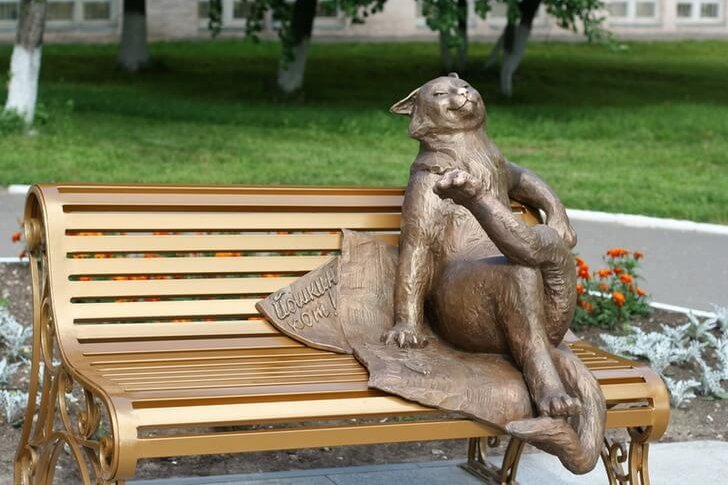
Complex "12 Apostles"
The sculptural composition represents a group of apostles following Jesus, and is part of the clock mechanism of the chimes installed on Patriarchal Square. It is based on the well-known biblical story about the arrival of Christ in Jerusalem. Each figure reaches 1.5 meters in height. Starting from 9 am until 9:00 pm, once every 3 pm, Jesus on a donkey and his followers appear from the gate, accompanied by a church choir.

Republican Puppet Theater
The puppet scene was founded in the 1940s. It all started with the fact that in the drama theater during the intermission they began to show short performances with puppets, which very soon became independent performances. The scene received its own building in 1989, before that the actors performed at other people's venues and toured a lot. Today, the theater is housed in a new building in 2014, made in the form of a medieval German castle.
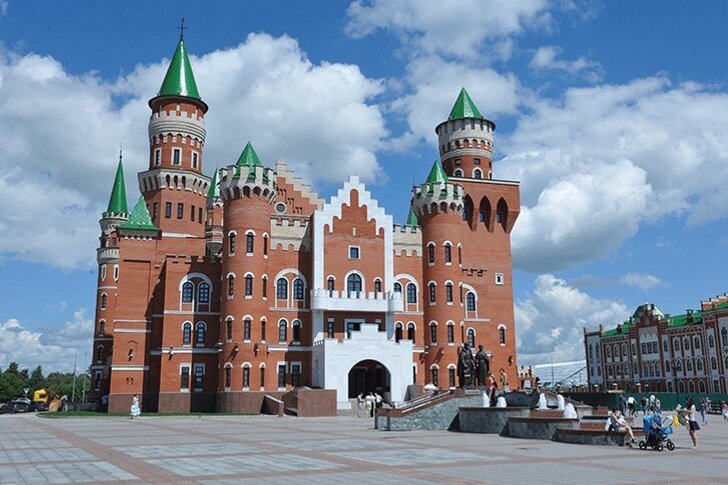
National Art Gallery
The museum was founded in 2007 in a purpose-built building - an almost exact copy of the Venetian palazzo (only made in red). This building is one of the most picturesque in Yoshkar-Ola and dominates the architectural ensemble of Obolensky-Nogotkov Square. The gallery regularly hosts exhibitions of collections brought from leading museums in Russia, there is also a permanent exhibition of local artists.

National Museum of the Republic of Mari El
Local History Museum, opened in 1920. Over the long years of its existence, the collection moved several times until it settled in the building of 1903 - now an architectural monument of regional significance. To date, the collection contains more than 230,000 items, which are exhibited both in the main department and in branches. At least 130 thousand people visit the museum every year.
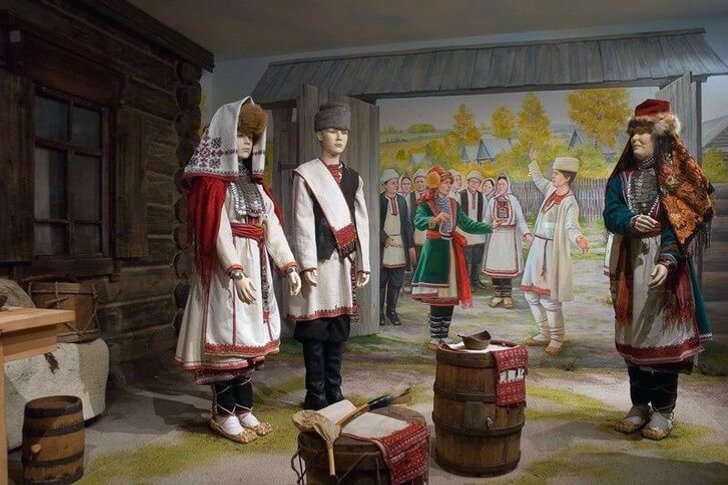
Museum of the History of the City of Yoshkar-Ola
The museum was founded in 1996 on the initiative of the city authorities. His collections are housed in the former estate of Chulkov, a two-story red-brick building built in 1911. The permanent exhibition consists of old photographs, archival documents, works of applied art, heraldic symbols, household items and home furnishings. Thematic exhibitions are held here from time to time.

Gulag Museum
The collection is located on the territory of a historic building of the mid-19th century, which in Soviet times housed a prison for political prisoners. The museum opened in 2011. The exposition is a standard set for such places, but it also has its own gloomy zest - torture tools that were actively used by NKVD investigators to obtain the testimony they needed.
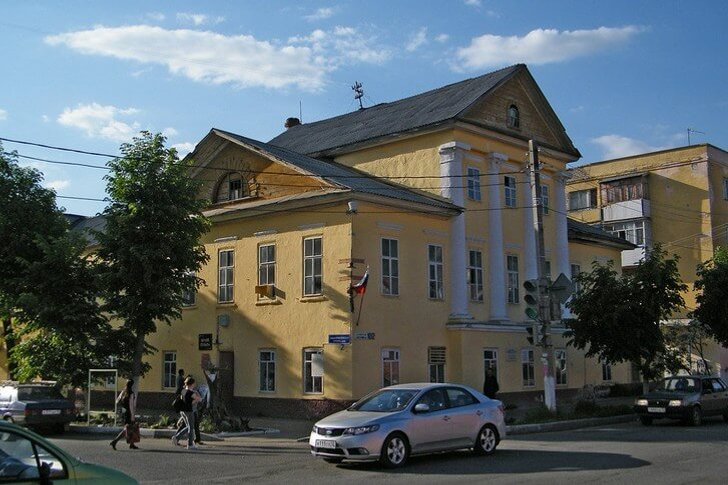
Art Museum
The organization was formed in 1981 as an exhibition site, which gradually grew into a permanent exhibition. The main emphasis in the museum is on promoting the work of local artists - representatives of different peoples of the Republic of Mari El. Thus, the museum's collections develop the idea of national tolerance and mutual understanding on a solid platform of art.

Museum of Folk Applied Arts
Museum of 1999, dedicated to the creativity and cultural heritage of the peoples of the republic. The collection is located on the territory of a wooden house that belonged to a state official before the Revolution of 1917. Tourists will be interested in attending an excursion or a master class, where they will teach some traditional craft and tell a lot of interesting facts and details.

Mari Youth Theater
Despite the name, the doors of the theater of the young spectator are open to everyone, as it puts on performances for adults, youth and children in Russian and Mari. It was formed in 1991. The basis of the repertoire is the works of Russian and world classics, as well as plays by national authors. More than once the troupe took part in the Mayatul festival, which gathers representatives of the Finno-Ugric peoples.
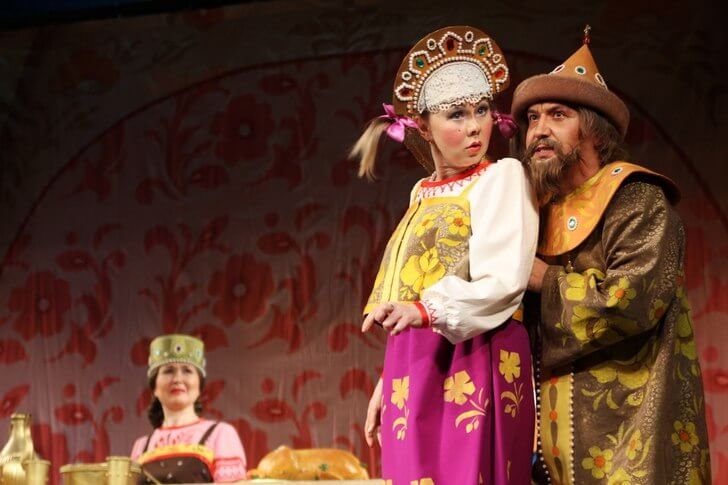
Mari Opera and Ballet Theater
The opera stage became an independent institution in 1994, since 2014 it has been located in a new building, which is considered the best in the Volga region in terms of equipment (for example, the organ for the theater was bought in Strasbourg). The repertoire includes classical operas, ballets, operettas, musical performances for children. Famous soloists of the best theaters in Russia often come here to please the audience with their skills.

Drama Theater named after M. Shketan
The oldest stage in Mari El, founded in the 1920s on the basis of a school drama club. For almost 100 years of existence, its own special traditions have developed here. The theater is housed in a classical building with massive columns and a Greek portico, surrounded by fir trees and flowery lawns. Passing by, you immediately understand that this is a temple of art and the kingdom of Melpomene.
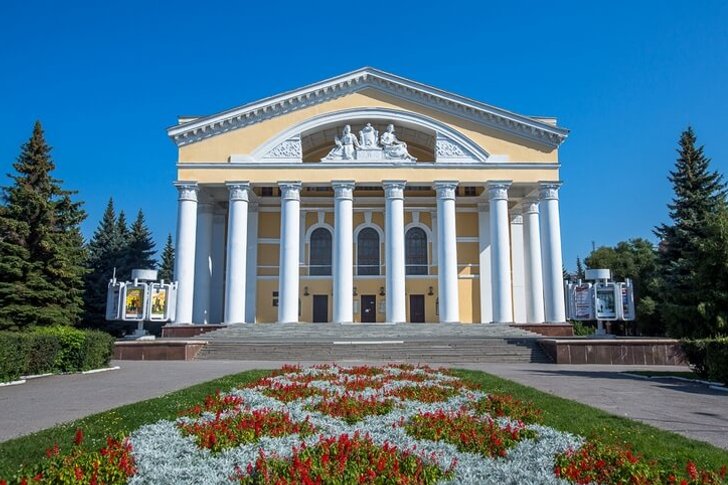
Russian Drama Theater named after G. Konstantinov
Six theaters for such a small town as Yoshkar-Ola - perhaps this is too much? Not at all, because everyone has an appreciative audience. So the Russian Drama Theater can always count on its audience, who appreciates modern dramaturgy along with the eternal classics. The institution has been operating since the 1920s and is one of the oldest in the capital of Mari El. The stage is located in a 1984 model building.

Annunciation Tower
One of the buildings of the Tsarevokokshaysky Kremlin. Despite its small age (the whole complex was erected in 2007), it looks like a real historical landmark, as it was built in compliance with all the canons of Russian stone architecture - from afar, it even resembles the tower of the Moscow Kremlin due to the same color and shape. In the middle of the building there is an arched passage, in the central part there is a clock with chimes.
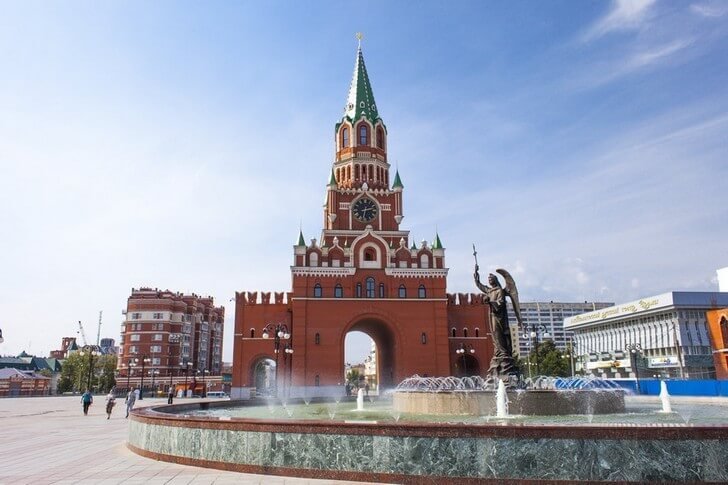
Blagoveshchensky cathedral
The magnificent architectural complex is the dominant feature of the entire development of the central part of Yoshkar-Ola, built in 2010 in the Russian style. The facade of the temple is generously decorated with rich decor and paintings, the elegant entrance porch resembles the entrance to the luxurious royal chambers, the elegant hipped bell tower is crowned with a dome shining in the sun. The cathedral looks like a bright blossoming bud during spring flowering.

Church of the Assumption of the Blessed Virgin Mary
The church was erected in 2006 for the 60th anniversary of the Victory on the initiative of the head of the republic and the local archbishop. The building was built in neo-Byzantine style. The outer façade is not distinguished by a large amount of decoration, however, thanks to the contrast of the color of the roof and walls, the temple looks quite festive. Graduates of the Yoshkar-Ola Art School worked on the mosaic covering the vaults and ceiling.
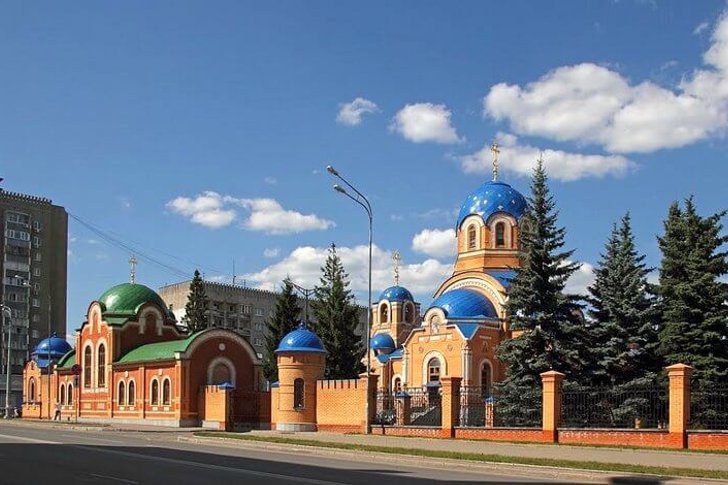
Church of the Holy Trinity
The Trinity Church is the first stone building in Yoshkar-Ola - it began to be erected in the first half of the 18th century. But it has not reached our days, since it did not survive the upheavals of the Soviet era. The modern building of the 2000s is a mixture of the Baroque style and traditional Russian architecture, typical of Central Russia in the 17th-18th centuries. Due to the abundance of decorative kokoshniks, stucco and carved elements, the facade of the church seems slightly overloaded, but still very picturesque and solemn.
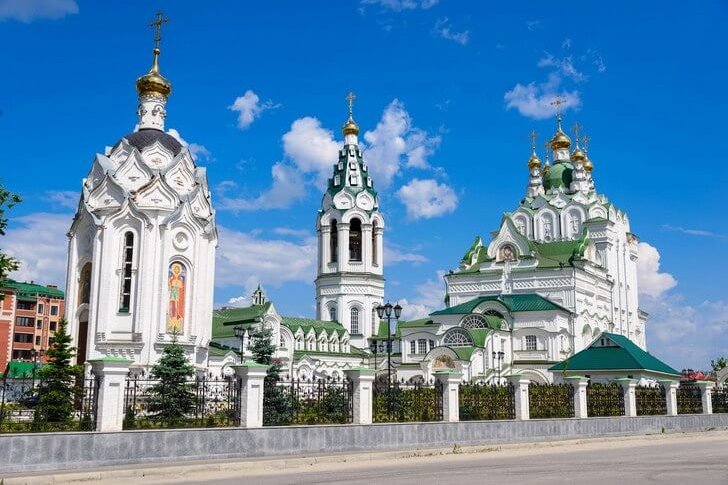
Cathedral of the Resurrection of Christ
The construction of the middle of the 18th century, built partly at the expense of the Kazan merchant V.F. Bulygin, partly at the donations of the townspeople, has not survived to this day, it was demolished in the 1960s. The modern building, erected on the same site in 2010, is a classic baroque temple with a hipped bell tower. It harmoniously fits into the surrounding landscape.

Ascension Cathedral
Compared to other temples of Yoshkar-Ola, as if competing with each other in the beauty and splendor of architecture and decoration, the Ascension Cathedral does not shine with bizarre shapes, colors and rich decoration. No wonder - after all, this is the only religious institution that has survived to this day in its historical form and was not completely destroyed under the USSR, although it suffered considerably.
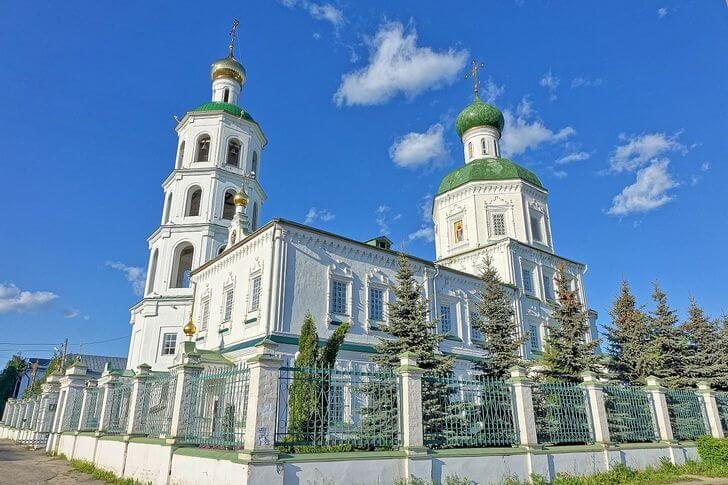
Botanical Garden-Institute of PSTU
The Botanical Garden was founded in 1927 as the first plant nursery in the republic. Today it is a unique museum of nature, where species from all five continents are collected: decorative, medicinal, fruit, edible. The main tasks of the garden are the preservation and cultivation of rare plants, scientific and educational activities and promotion of environmental principles.
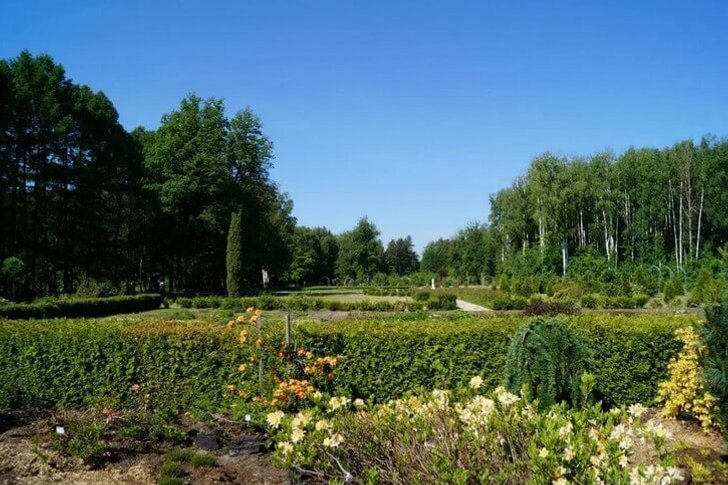
Central Park of Culture and Leisure
The city park, created and equipped in the middle of the 20th century, is a popular place for family recreation, friendly meetings, walks and idle pastime. On its territory there are a large number of sculptures, fountains, alleys, decorative lawns, and, of course, attractions, where would we be without them. On holidays, festivities are organized here, musical groups and folklore groups perform.
